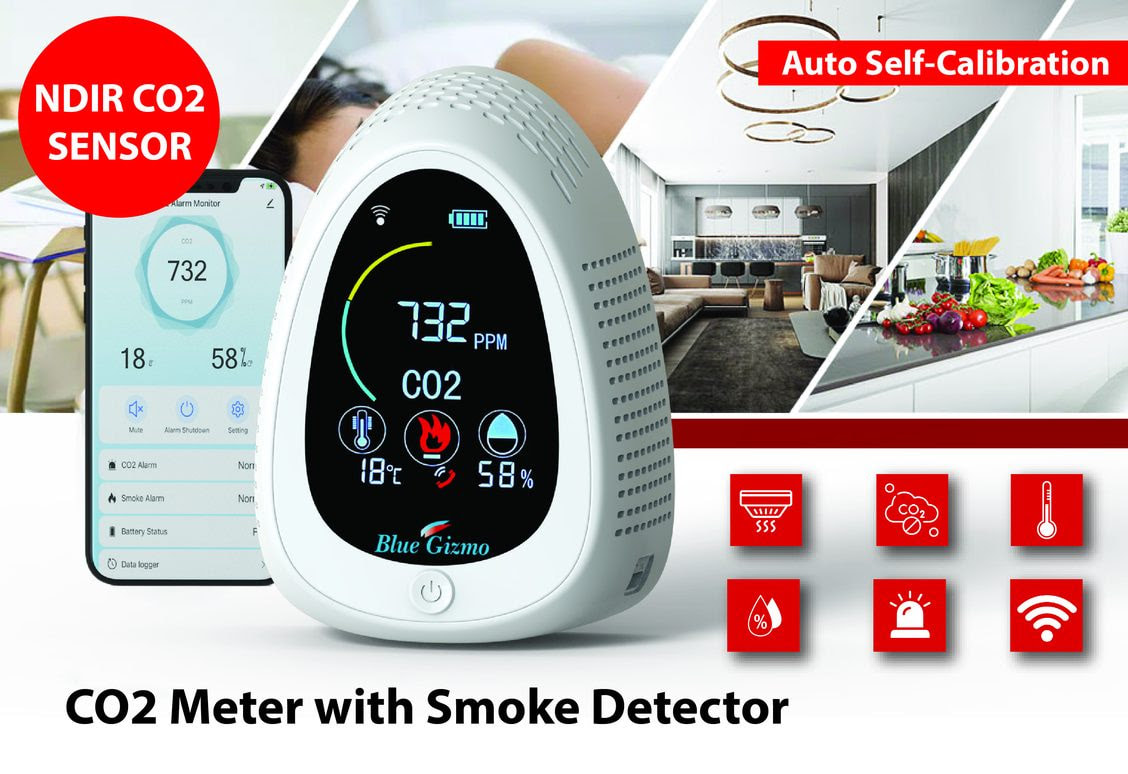SMART introduces a new IAQ meter with smoke detector and with real-time monitoring CO2, temperature and humidity monitoring on your mobile phone. Indoor air quality (IAQ) is the air quality within and around buildings and structures. IAQ is known to affect the health, comfort, and well-being of building occupants. Poor indoor air quality has been linked to sick building syndrome and reduced productivity.
By effectively monitoring indoor air quality, building occupants are able to ensure workers can enjoy healthier spaces with cleaner air, free from potentially harmful chemicals and pollutants.
By effectively monitoring indoor air quality, building occupants are able to ensure workers can enjoy healthier spaces with cleaner air, free from potentially harmful chemicals and pollutants.
COVID-19 is mainly transmitted by close contact and respiratory droplets which are released when an infected person coughs, sneezes, talks, or sings. It can also be spread through virus aerosols in the air under certain settings, such as enclosed environments which are poorly ventilated. Hence, it is critical to mitigate this risk by improving ventilation and air quality in indoor environments. To assess the adequacy of ventilation, measurement of ventilation rate is required. If this is not possible or difficult to determine, CO2 levels in occupied areas may be used as a proxy for ventilation adequacy.
Managing by monitoring CO2 level - Refresh air inlets and discharge stale air to care for your customers.
How to manage by monitoring CO2 level?
You may use CO2 readings to identify pockets of under-ventilated spaces or overcrowding, so that prompt action can be taken to improve the situation. Quick assessment can be done by taking readings over a period of at least 5 minutes per sampling location, in occupied areas at breathing zones. In spaces with a dynamic crowd, managers could implement constant monitoring by installing CO2 sensors with visible displays in occupied areas or take spot measurements especially during high occupancy. CO2 levels exceeding 1100 ppm indicate inadequate ventilation or potential overcrowding.
SS554:2016 recommends an indoor CO2 limit of not more than 700 ppm in excess of outdoor levels. With ambient outdoor CO2 levels at about 400 ppm, the limit is therefore approximately 1100 ppm.In view of the current COVID-19 situation, managers are advised to aim for CO2 levels below 800 ppm over the measurement period.
Managing by monitoring CO2 level - Refresh air inlets and discharge stale air to care for your customers.
How to manage by monitoring CO2 level?
You may use CO2 readings to identify pockets of under-ventilated spaces or overcrowding, so that prompt action can be taken to improve the situation. Quick assessment can be done by taking readings over a period of at least 5 minutes per sampling location, in occupied areas at breathing zones. In spaces with a dynamic crowd, managers could implement constant monitoring by installing CO2 sensors with visible displays in occupied areas or take spot measurements especially during high occupancy. CO2 levels exceeding 1100 ppm indicate inadequate ventilation or potential overcrowding.
SS554:2016 recommends an indoor CO2 limit of not more than 700 ppm in excess of outdoor levels. With ambient outdoor CO2 levels at about 400 ppm, the limit is therefore approximately 1100 ppm.In view of the current COVID-19 situation, managers are advised to aim for CO2 levels below 800 ppm over the measurement period.













